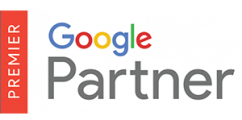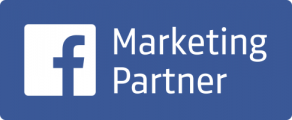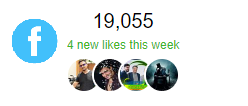Digital Marketing Strategies
DIGITAL MARKETING STRATEGIES
Digital marketing is a beast. Which channels should you be on? What do SEO and PPC really mean? What are the advantages and disadvantages of each of the different types of digital marketing? Where do you even start?
To help you out, we’re looking at the top 10 types of digital marketing. Clearly, the lines are blurred between the various options, but at least you’ll have a kind of menu to choose from.
When it comes to choosing, the usual questions will apply: WHY do you want to use digital marketing and WHO are you trying to reach with your marketing efforts? This will help you select the right formats and channels to achieve your objectives.
Types of digital marketing
—
- Content marketing
- Search engine marketing
- Display Advertising
- Mobile Marketing
- Social Media Marketing
- Email Marketing
- Influencer Marketing
- Affiliate Marketing
- Video Marketing
- Audio Marketing
Let’s take a look at the top 10 types of digital marketing, the pros and cons of each and a couple of next steps you can consider if you want to get started.
- CONTENT MARKETING
Content marketing involves creating and distributing content—text, pictures, multimedia— that adds value for your audience, instead of just broadcasting an advertising message. If you’re in B2C (business to consumer), ‘content’ can mean social media posts, blog articles and fun videos; if you’re in B2B (business to business), it might be more white papers or reports, webinars and educational videos.
The pros
It’s free in the sense that it’s about attracting customers to you and your brand instead of paying to push your message out to a cold audience
Content is incredibly versatile and can help you build your brand as you educate, entertain and inspire your audience; it’s what fuels all the other types of digital marketing, driving search engine optimization, social media, email, etc.
The cons
With everyone now waking up to the importance of content and pumping out blog posts, videos and whatever else, it’s a very cluttered space that makes it hard to stand out
To be effective, you need to come up with consistent, high-quality content that meets the needs of your customers while also representing your brand and achieving your business objectives
Content sits right at the heart of your entire digital marketing eco-system. Design by aran&xa.
The next steps
Design a simple content strategy that includes:
4-5 core themes you want to focus on, at the sweet spot between what your ideal customer wants and needs on the one hand and what your brand wants to communicate on the other;
the formats you want to use (video, audio, articles, etc.);
and the channels where you’ll post each piece of content (on your website, on specific social channels, etc.)
Start simple—if you’re a strong writer, maybe go with a regular blog post, or if you’re confident on camera then record a weekly video—and then build from there!
- SEARCH ENGINE MARKETING
Search engine marketing is all about getting your website to appear at the top of the results when someone searches for your brand, your products and services and other relevant words and phrases. Think Google (let’s face it, that’s the main one) but also Bing (often installed on business computers, so good for B2B!). It includes both organic or natural search (search engine optimization, or SEO) and paid search (pay per click, or PPC) and both desktop computers and mobiles (as well as smart home assistants these days—see number 10—audio marketing).
The point of search engine marketing is to make sure your customers can actually find you.
SEO
Search engine optimization does what it says on the tin: optimizing for search engines! This means creating content that people are actively searching for as well as making sure that this content, and the platforms where it’s sitting, is optimized from a technical point of view as well. Everyone should be doing this, no matter what business or industry you’re in.
The pros
It’s free!
When your brand appears in the organic search results, it comes across as being more ‘authentic’ and objective in the eyes of your customers
The cons
You may not have to pay specifically for the search results, but it does take time and effort to create amazing content and do the technical optimization of your website
You’re at the mercy of Google’s changing algorithms and with all the content that’s out there now it’s very hard to rank highly in the organic results
The next steps
SEO starts with content, so get that content strategy in place first (see point 1). Do some keyword research to find out what people are searching for and try to stay on top of the latest updates from the likes of Google. If you’re just starting out, you can use a plug-in to help you optimize your site (e.g. Yoast for WordPress) or, if you’ve got a bigger budget, you can work with an expert to do a more comprehensive job.
PPC
Pay per click is paid search advertising, for instance, Google Adwords or Bing Ads. It looks almost the same as the natural search results, except that it appears at the top of the page with a little box that says ‘Ad’. You can buy a top-ranking position via an auction based on keywords, geographical location and demographics—it’s especially useful for e-commerce and for local businesses.
The pros
PPC can quickly buy you a top ranking if you’re willing to pay for it
You only pay when someone clicks (hence the name!)
The cons
It can get expensive, especially when you’re targeting popular keywords
A lot of customers are skeptical of paid ads and are more likely to trust the natural search results
The next steps
If you have the money for it, you can use PPC to complement, and boost, the work you’re doing to optimize for natural search. Again, you’ll need to do keyword research and then play around with different combinations of targeting and ad copy to see what works, making sure you track and optimize as you go. PPC can get quite complicated so if possible, you’ll want to work with an agency.
- DISPLAY ADVERTISING
You can think of banner ads as billboards on the internet highway…
Display advertising, also known as banners, is a lot like the traditional print ads you’d get in magazines, except that they are online, and you can target specific publications that you know your audience reads. It has become much more sophisticated now with programmatic advertising (where ads are booked, analyzed and optimized automatically using algorithms) and retargeting (like when you look at a pair of shoes on your favorite department store website and then those shoes follow you onto every website you visit for months afterwards).
The pros
You can target, and re-target, customers very effectively
Display ads are really easy to track and allow you to measure conversion in real time
The cons
Customers can suffer from ‘ad blindness,’ ignoring your ad to focus on the content they are trying to read
You need to find a way to maximize impact, so that people notice you, but not so much that they
get annoyed!
The next steps
For display ads, you need to think both about the creative—making it clear, impactful and memorable—and the placement—choosing a relevant context that fits your message and is a match for your audience. If you’re a small business and you know your market well, you can approach specific publishers about advertising on their site directly; or you can also use a third-party solution like Google Display Network or Facebook Audience Network.
- MOBILE MARKETING
Given the amount of time your customers are spending on their phones, mobile marketing has to be a key ingredient in your digital marketing strategy.
Mobile marketing is almost as broad as digital marketing itself and will overlap with a lot of the other types. It involves doing everything you’re doing on desktop but adapting it to mobile, as well as doing mobile-specific things like in-app advertising, sending text messages, and using social messaging apps. It’s especially important if you’re targeting a younger audience who spends all their time on their phones
The pros
Customers (that includes you and me!) are on their phones much more than on their computers these days, so mobile marketing means reaching them where they’re spending their time
Mobile marketing can be hyper-targeted using specific audience segments or geo-fencing to get to people in a specific location
The cons
You have a very small space to play with creatively on a phone, mobile ads have a low click rate (with the few clicks you do get mainly being due to fat finger syndrome!) and most apps get downloaded once and are then forgotten
People don’t want to be interrupted by brands and marketing messages when they’re in the middle of communicating with friends and family
The next steps
The absolute priority is to make sure that your whole website and all your content is ‘mobile friendly’ so that it works and looks good on all different devices. This usually means keeping things short and simple, using clear text and big buttons and putting captions on your videos so people can get the message even when they don’t have sound. That’s already a great place to start and then you can consider more specific mobile advertising, text message campaigns or apps later on.
- SOCIAL MEDIA MARKETING
Social media Compared to other channels like TV, print and even online display advertising, social media adds a whole new dimension of engagement and interaction. Instead of just broadcasting messages out at a mass audience, you can really interact with your customers and listen to what they have to say. There are all sorts of channels—Facebook, Instagram, Twitter, LinkedIn, Pinterest, YouTube, Snapchat—and options ranging from organic—for example, Facebook groups, page posts, stories and Messenger—to paid—like Facebook ads. Pretty much every business should be on at least a couple of these social channels.
The pros
The effort you put in can be multiplied as people like, comment on and share your content with their friends and connections
Facebook ads, in particular, have become very sophisticated and you can target specific customer segments with your content to get your message seen by the right people
The cons
The Mark Zuckerbergs who are behind these social channels are constantly making changes, adjusting their algorithms or finding new ways to make money, and it’s hard to stay on top of all these changes and to keep your marketing working effectively
It may sound simple to do a bit of posting on social, but you need a proper strategy and a lot more time than you think to do it properly and consistently
The next steps
Your social channels should be part of your content marketing strategy (see point 1) and the same steps apply: decide on what content you want to create, what format and then what channels you’re going to distribute it on. An added step is to create a calendar so that you know when you’re posting what content on which channel. Remember that social media is interactive so it’s not just about pushing out your pretty pictures and posts but also responding to your customers and having real conversations.
- EMAIL MARKETING
Who can resist a Black Friday deal?
Email may seem old school in a world where everyone is instant messaging or Snapchatting, but email marketing is still one of the most effective digital marketing tools. Especially e-commerce sites and retail brands are seeing a lot of success with pushing seasonal promotions and discounts (think Black Friday deals or Mother’s Day), while you can also use email newsletters to ‘nurture’ your prospects by giving them a lot of value beyond just pushing your products and services.
The pros
Having an email list means you can stay in touch with your followers independently of any changing algorithms (say, if Mr Zuckerberg suddenly decides to close down your Facebook group)
Staying in regular contact with your email list will help you build relationships and will keep you ‘top of mind’ when they’re ready to buy
The cons
A lot of emails are left unopened, so you’ll need to come up with strong subject headings to grab people’s attention away from their cluttered inboxes
You need to find a way to keep adding value so that they stick with you and don’t unsubscribe
The next steps
Choose an email software (e.g. Mailchimp, ConvertKit, GetResponse) and then start to collect people’s emails. You need to give them a reason to opt in, for instance, offer them a step-by-step pdf guide, or a set of free design templates, and make sure you check the regulations (if you have European customers, you’ll need to pay attention to the new GDPR rules). Once you start collecting those emails, you should stay in regular contact with your list so create a weekly newsletter and make sure it’s packed full of value (and content!), not just sales messages and promotions.
- INFLUENCER MARKETING
Getting one of these top influencers to promote your brand might be the dream—but a smaller influencer can be much more effective (and cheaper!) when targeted to the right audience.
Influencer marketing involves partnering with influencers—celebrities, experts, authority figures—who have an existing audience. When they promote your product to their audience, often on platforms like Instagram, Snapchat or YouTube, loyal followers will jump on their recommendation and buy from you. You might naturally think of the Kardashians or some uber-cool young actress helping to promote your product to individual customers, but influencers can also be effective for B2B—it’s just that you’ll just be partnering with more serious and specific thought leaders or experts in your industry.
The pros
You get to piggyback on the influencer’s existing audience, rather than wait until you’ve built your own
Becoming associated with a popular personality can give you instant ‘cool points’, especially with a younger audience
The cons
It’s not as simple as just paying a load of money to get a big celebrity—it’s much more effective if you choose the right influencer based on your brand and your audience, and find an authentic way to partner with them
There’s a growing distrust of influencers and you need to be super careful and transparent about the fact that you’re paying them to promote your brand
The next steps
Decide on what you want to get out of your influencer marketing campaign; come up with a shortlist of possible influencers who have the right audience (it’s not just about the size but about who their followers are and how engaged they are) and feel like a good match for your brand; and then get in touch with them and see what you can negotiate!
- AFFILIATE MARKETING
Affiliate marketing means outsourcing to other individuals or companies who will promote your products in return for a commission. It’s especially popular with bloggers and with e-commerce sites (one of the biggest programs is Amazon Associates). The affiliate will promote your product on their website and if the customer clicks through and buys, then the affiliate will automatically receive a commission for driving that sale.
If you want to make money in your sleep, then affiliate marketing might be for you! Design by Corne.
The pros
Your affiliates are doing the hard work of marketing and sales for you!
There’s no upfront cost as you only pay for conversions (when the affiliate is successful, and someone actually buys from you)
The cons
You won’t have 100% control over your brand, and you’ll need to educate them on your brand identity and messaging
You can’t just outsource it and that’s it, you have to spend time tracking and monitoring your affiliates
The next steps
Start with a competitive analysis to see what kind of programs are out there and what level of commission they offer; decide on whether you want to run your program in house or partner with an affiliate management agency; and get clear on the payment details, terms and conditions. Make sure you do a proper onboarding so that they understand your brand guidelines and what’s permitted and what’s not.
- VIDEO MARKETING
Video is the star of the show these days and if there’s one thing you should be doing, whatever your business, this is probably it! It can be a short clip or a longer format, educational or entertaining, pre-recorded or streamed live, in real time. It’s no longer just the case of taking a TV ad and putting that online but instead, you’re creating bespoke content for your digital channels.
The pros
Video can be super effective in getting your message across as it creates an emotional connection with the audience and is much more memorable than just some text or even a picture
All the major channels—Facebook, Instagram, LinkedIn—are pushing video now so your video content will get more reach and engagement in those social feeds and rank higher in search engine results
The cons
With the low attention spans of today’s audience, you need to grab people’s attention in just a few seconds—or they’ll move on to whatever’s next in their feed
Although anyone can make a low-budget video, creating high-quality, engaging video content will take time, skill and money
The next steps
Video should be part of your content marketing strategy (go back to point 1 again!). Be specific about whether you’re trying to be inspirational, educational, or entertaining and make sure you’re focused on that objective as you start creating. It doesn’t have to be perfect with high production values—a lot of great video content is shot on an iPhone—but do think about lighting and sound to make sure it’s clear and professional.
- AUDIO MARKETING
Radio has come a long way since the Golden Age of commercial broadcasting back in the 1920s, 30s and 40s. As much as radio was replaced by television, most people still listen to the radio every week—especially now with the growth of internet radio. You still have the option to do traditional radio advertising or similar ads on channels like Spotify; but audio marketing can be much broader, including podcasts and smart home assistants like Amazon Alexa or Google Home.
Podcasts can be a great way to market to your audience—whether by launching your own, or simply being a guest on someone else’s.
The pros
Audio—whether you’re talking more traditional radio or the newer podcasts—is a really convenient medium that offers on-demand, on-the-go listening for a busy audience, and tapping into that means you’re reaching that audience where they’re already spending their time
Audio content can be easier and cheaper to produce than video (and you may even be able to repurpose content, for instance, taking the audio from an existing video)
The cons
Your listeners will often be busy multi-tasking and it can be hard to get them to take the next step (there’s no easy button for them to click on to learn more or sign up!)
Marketing on smart home assistants is still pretty experimental and there’s a steep learning curve without any immediate return on investment
The next steps
This is such a diverse bucket of tools so the first step is to decide what it is you want to do—create a radio ad, start a podcast, start experimenting with smart home assistants… Think about who your audience is and where they’re spending their time, which is the best channel to focus on and maybe also how you can use content that you already have rather than create something from scratch. A good place to start is to find a list of relevant podcasts that you can contact to see if you can be a guest.











